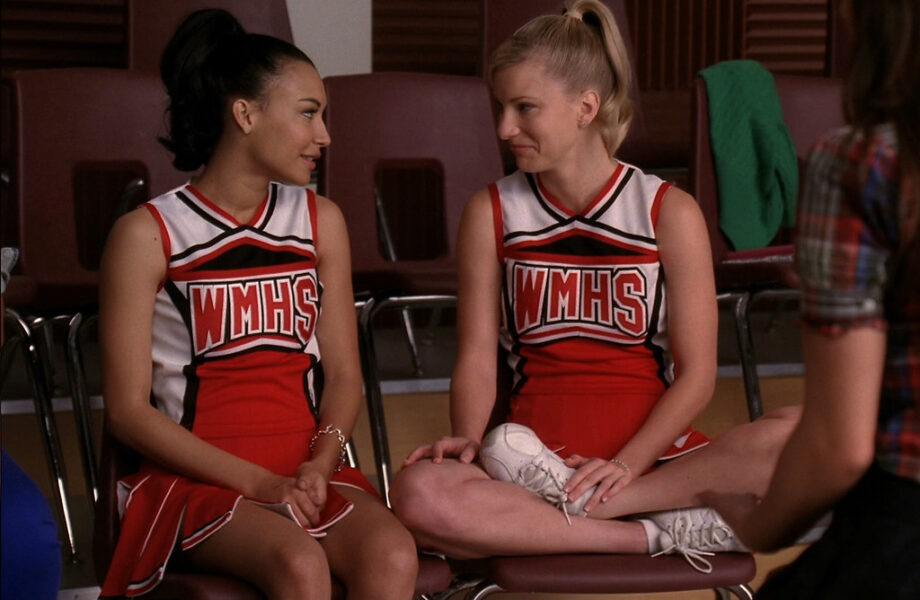The FOX television series Glee was a teen comedy-drama that followed Spanish teacher Will Schuester as he decides to take over Glee club and the variety of students who it affects. As the show follows a musical club, it is also a musical, taking a variety of songs from different genres and covering them every episode. It aired from 2009 to 2015 for a total of six seasons. When this show aired, it was a sensation. It was extremely popular with many self-proclaimed “outcasts” and critics alike. It has won several Emmys and the soundtracks have topped the music charts. Daniel Carlson from The Hollywood Reporter reviews the pilot, saying “is a tightly done hybrid of musical and dramedy that’s unabashedly heartfelt and possessed of an honest sweetness,” and “instead of wondering why you’re spending time with these characters, you’ll wish you could spend more.” While the show did have its ups and downs over the years, still one hundred episodes later, reviews are overwhelmingly positive. Malina Saval from Variety states “has not only solidified the importance of musical education in our schools as a way to promote the power of self-expression, but has instilled in ‘Gleeks’ a desperately longed-for sense of self-worth — regardless of race, color, creed or sexual orientation.”

While there are sparingly few things I believe Glee did well, most of it was done severely wrong. As Saval stated above, she argued that the show did wonders for representation within the LGBTQ+ community as well as other minorities. When the show first aired in 2009, any sexuality other than straight was still slightly controversial. Because of this, many saw any representation as positive representation, but the two don’t always correlate. By 2009, there were several well-written movies and shows focusing on the issues of the queer community.
While in season one Colfer’s character Kurt coming out to his father was handled well, it goes downhill from there. While Kurt’s coming out was handled with care, Santana’s coming out happened within one or two episodes where she was forced out of the closet. While this does happen in real life, many lesbian women looked up to her character, and it was disappointing to see how poorly the show handled it. There was also significant bi-erasure. When Blaine was questioning his sexuality, Kurt told him, being bisexual was what men told themselves when they wanted to have a normal high school experience. So, while in some ways the show did have much more queer representation, these scenes invalidated many bisexual kids’ sexuality.
In regards to race, the show prided itself on being diverse without really being diverse. Majority of the characters who received the most screen time were white. Mike Chang, a main character who appeared in all six seasons, has less than ten minutes of dialogue throughout the entire show. When Mike and Tina both date, many jokes about them both being Asian were made at their expense. Mercedes and Santana’s character also perpetuated stereotypes and so many plot lines revolved around their characters being pushed to the back to focus on Rachel. While this did have relevance to the show, it seemed to send the opposite message of what the show wanted to convey.

The show also deals with disabilities. Artie, played by Kevin McHale, is in a wheelchair. However, McHale in real life can walk. When people with disabilities similar to Artie’s discovered this, they were rightfully upset, as this role should have gone to someone who was actually confined to a wheelchair. It is already hard for people with disabilities to break into the industry, so when roles like this are given to able bodied people it is frustrating.
Along with social issues, the show also attempted to tackle some heavier themes. During season four, the mean cheerleader, Kitty, convinces Marley she is gaining weight by having her costumes for the musical altered in secret, causing Marley to develop bulimia. Bulimia is a serious eating disorder that affects thousands of teenagers, and the show completely dropped the ball. When Marley faints during a competition, everyone blames her for them losing instead of having concern for her. The show makes her out to be the bad guy. In another episode, there is a “school shooting.” In the U.S school shootings are far too common, and these experiences are traumatizing. However, Glee moves past it after one episode, with the event having no lasting effects on the students.
In addition to the show mishandling these issues on the show itself, there were also problems behind the scenes. Within the past two years, many of Glee’s cast members have spoken about Lea Michele, who played lead Rachel Berry, and the hostile work environment she created. Samantha Marie Ware, a new regular on season six, spoke out about Michele’s constant rude behavior and microaggressive comments she made towards her, as well as constantly threatening to get her fired. After Ware spoke out, Amber Riley and Alex Newell shared similar sentiments. While the show touted itself as progressive and inclusive, the creators and production did not seem to hold those same values when the cameras weren’t recording.
The overall issue of Glee is that it took on more than it could handle. It attempted to tackle every social issue without really delving deep into any of them. As the years have passed, and fans of the show rewatch it as well as the new generation streaming it, people are seeing the facades it had put up. Now, in 2021, people are realizing not all representation is good representation, and more movies and television shows are being held to that standard.

